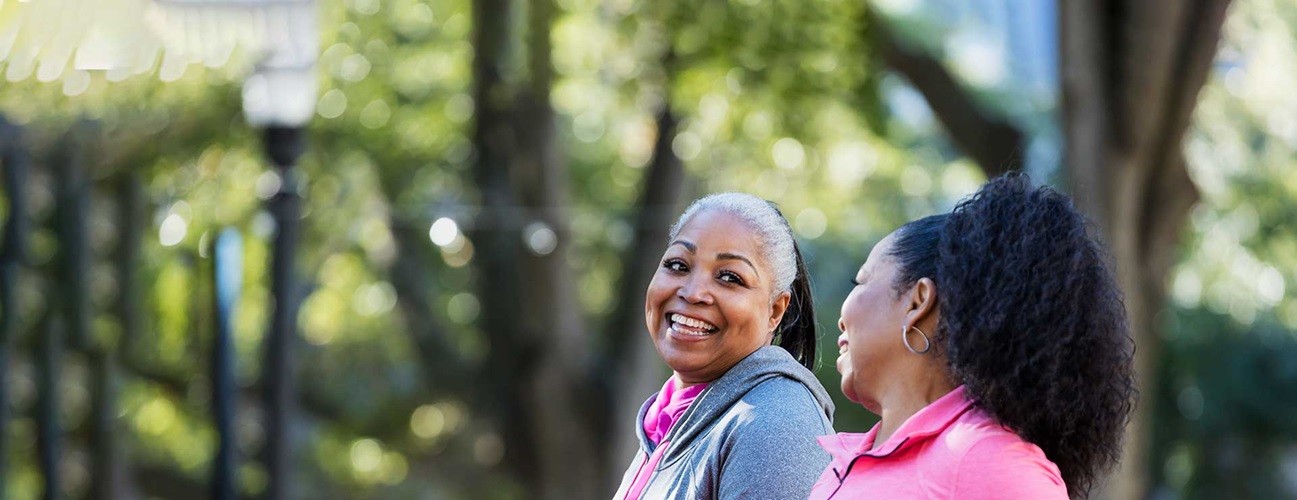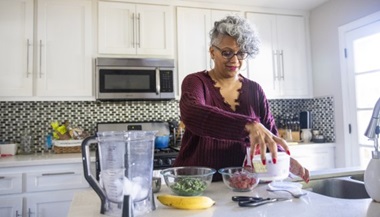Breast Reconstruction
What is breast reconstruction?
Breast reconstruction is surgery to create a new breast shape in place of a breast that has been removed (mastectomy). A breast mound is created that comes as close as possible to the shape and look of a natural breast.
The surgery may be done to reconstruct either one breast (unilateral) or both breasts (bilateral). The goal of the surgery is to create a breast mound that matches the opposite breast. If both breasts have been removed, the goal of the surgery is to create both breast mounds about the size of the woman’s natural breasts.
Making a decision about breast reconstruction
The decision to have breast reconstruction is a personal one. It depends on how you think you will feel after a mastectomy. If you think you would feel uncomfortable with a flat chest or wearing a false breast (prosthesis), you may want to consider breast reconstruction. If you don’t want to have any more surgeries, you may not want to do it.
If you’re thinking of having breast reconstruction, talk with your doctor about it before you have your mastectomy. Your doctor can tell you if reconstruction is an option for you. And he or she can tell you what type of reconstructive surgery might work best for you.
Your doctor will talk with you about factors that can affect whether the surgery will work for you. These include:
-
The size and location of the cancer, which determines the amount of skin and tissue to be removed in the mastectomy
-
The amount of tissue removed from the breast
-
If your chest tissue has been damaged by radiation therapy or aging, and is not healthy enough for reconstruction surgery
-
Potential for complications
-
Your overall health and health history

New Breast Reconstruction Advances
When it comes to breast reconstruction, it can be difficult to figure out what will work best for you. But the most important thing to know is that there are options, says Michele Manahan, M.D., an associate professor of plastic and reconstructive surgery at Johns Hopkins Medicine. “Breast reconstruction is not one-size-fits-all. Now more than ever we have so many ways to restore your form and make you look and feel like yourself again.”
When is the best time to have breast reconstruction?
Talk with your doctor before your mastectomy. He or she will then talk with you about your options for:
-
Immediate reconstruction. This is reconstructive surgery done at the same time as the mastectomy.
-
Delayed reconstruction. This is a surgery done after recovery from the mastectomy. If radiation therapy is part of the treatment plan, the surgeon may advise waiting until after the radiation is finished.
Here are some things to keep in mind about the best time to schedule it:
-
Your emotional and psychological well-being. Some experts think that waking up from a mastectomy with the reconstruction already done is less traumatic than waking up without a breast.
-
Any other treatments you are having. If you’re getting radiation after your surgery, you may need to postpone breast reconstruction. Radiation to the reconstructed breast can increase the chance of problems.
-
Recovery time. Having reconstruction surgery at the same time as your mastectomy may mean you’ll recover faster.
-
The condition of your skin. If your skin isn’t ready for the stretching that goes on during reconstruction, you may need to have the procedure later on. For example, the skin of women who smoke or who have diabetes may need extra healing time before reconstruction.
Common risks of breast reconstruction
Any type of surgery has risks. The risks of breast reconstruction include:
-
Bleeding
-
Fluid collection in the surgical area (called a seroma)
-
Infection
-
Blood clots
-
Excessive scar tissue
-
Problems with the sleep medicines (anesthesia) used during surgery
-
Bruising and swelling
-
Problems with the breast implant
-
Problems healing
The most common complication of breast reconstruction done with implants is capsular contracture. This is when the scar (capsule) around the implant begins to tighten. In some cases, a second surgery is needed to fix this problem.
Reconstruction after Breast Cancer | Pam's Story
After turning to Johns Hopkins for a second opinion after her breast cancer diagnosis, Pam Vierra says her reconstruction changed her life, leaving her in better shape than ever.
What are the different types of breast reconstruction?
There are 2 main types of reconstruction surgery:
-
Expander-implant. This method uses an expander to create a breast mound. This may be followed by the placement of a filled breast implant.
-
Autologous tissue. This method uses your own body tissues to reconstruct a new breast mound. These reconstruction surgeries leave you with 2 surgical wounds: the chest and the site where tissue was removed.
You may also decide to have other procedures to improve how your new breast shape looks. For example, you might decide to have reconstructive surgery on your other breast so that it matches your new breast shape. Or you may want to have a nipple or areola reconstructed.
Expander-implant surgery
Expanders are empty silicone "envelopes" placed under the pectoralis muscle. This muscle is between the breast and the chest wall. To enable the skin and soft tissues of the breast to stretch, the expander is filled with saline solution over several weeks. The saline is injected into the expander through a valve or port in the expander that lies just under the skin. Another option is filling the expander with air over 2 or 3 weeks.
Once the expander has been completely filled, it is left in for several more weeks to months. This allows for maximum skin and soft tissue growth. Once the skin has stretched enough, a second surgery may be done to remove the tissue expander and insert the permanent implant beneath your muscle and skin. Sometimes, the expander is just left in place.
Implants are envelopes filled with liquid that are put under the breast tissue and are used to form the shape of the breast. Implants may be filled with saline or silicone gel. Each type of implant has advantages and disadvantages. Your doctor will discuss the types of implants with you and help you decide which type to use.
Autologous tissue surgery
There are different ways to do this surgery, such as:
-
TRAM (transverse rectus abdominous muscle) flap. This is the most common method. An area of fat, skin, and muscle is removed from the belly (abdomen) and moved to the chest. The surgery gives you a tummy tuck. TRAM flaps may change as you gain and lose weight. It’s important to know that removing stomach muscle can increase stress on the back and put you at risk for developing a hernia. This type of surgery leaves a horizontal scar across the lower abdomen plus a scar on your chest.
-
DIEP (deep inferior epigastric perforator) flap. With this method, the surgeon takes fat and skin (but not muscle) from your lower belly and moves them to the chest. This surgery also gives you a tummy tuck.
-
Gluteal free flap. The surgeon removes part of the skin, muscle, and fat from your buttocks, and grafts it onto the chest. This is a more complex surgery. It is sometimes done with 2 teams of surgeons. One team may remove the flap, and the second prepares the blood vessels.
-
Latissimus dorsi flap. This method moves muscle, fat, blood vessels, and skin from your upper back to your chest. Sometimes an implant is also needed with this surgery.
-
TUG (transverse upper gracilis) flap. In this type, muscle and fat is taken from the upper, inner thigh and moved to the chest.
Healing after surgery
Immediate reconstruction surgery has a longer recovery time than for mastectomy alone. Recovery from delayed reconstruction is much quicker. With autologous tissue surgery, there's a second surgery site that will need to be cared for as it heals.
It's important to know that it can take up to 2 months before the final results of breast reconstruction can be seen. Be patient as your body heals.
DIEP Flap | Breast Reconstruction Overview
The deep inferior epigastric artery perforator (DIEP) flap is a common technique where skin and tissue (no muscle) is taken from a person’s abdomen to recreate their breast. Lillie Shockney, administrative director of the Johns Hopkins Breast Center, further explains.



